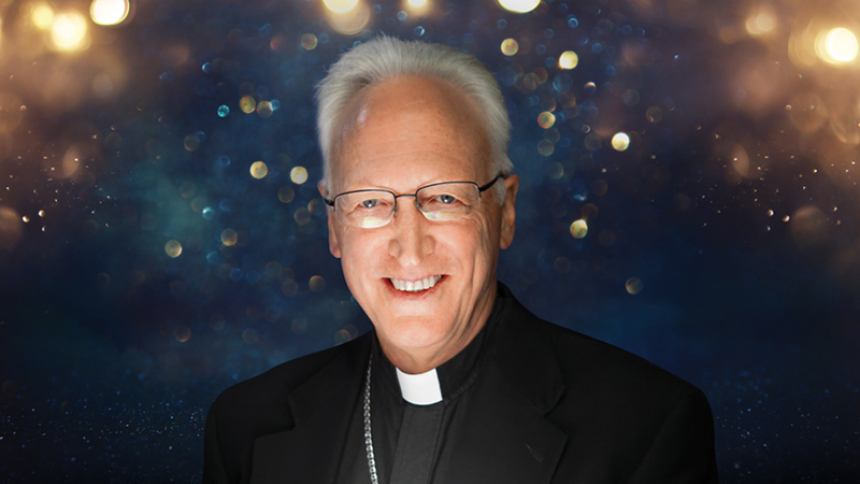
Today Bishop Earl Boyea's Year of the Bible moves onto the Gospel of Saint Luke. We'll be reading this book of Bible from Monday, April 5 to Wednesday, April 28. To join the Year of the Bible just text BYOB – that stands for Bishop's Year of the Bible – to 84576. As to why Bishop Boyea has chosen this book for us to read? Here's his explanation:
"Hello, I am Bishop Earl Boyea of the Diocese of Lansing. For the Easter Season we will be reading the Gospel of St. Luke (Monday, April 5-Wednesday, April 28). In fact, St. Luke wrote both a Gospel and the Acts of the Apostles. So, we will read the Acts after the Gospel and that will take us through Pentecost."
"These two books by Luke account for almost a quarter of the New Testament. Written sometime in the 80’s AD, tradition has ascribed these works to St. Luke, a companion of St. Paul (Philemon 24; II Timothy 4:11) and a physician (Colossians 4:14). Luke’s introduction (1:1-4) tells us his aim. He knows that others have written about Jesus, but he wants to give Theophilus “everything accurately anew, to write it down in an orderly sequence…so that you may realize the certainty of the teachings you have received".”
"Luke wants it clear that God has been acting consistently from the time of creation (the genealogy starts with Adam [3:38]), through all the Old Testament culminating in John the Baptist, through the preaching of the Kingdom by Jesus and his death and resurrection, into the working of the Church to the ends of the earth, especially through the preaching of Peter and Paul in the Acts of the Apostles. For Luke this is fundamentally a preaching pilgrimage both by Jesus and about Jesus."
"This journey begins with the Infancy Narratives of John and Jesus, the ministry of the Baptist as well as the transition to the ministry of Jesus (1:5-4:13). Chapters four through nine cover Jesus’ ministry in the Galilee area. Luke then has a special focus on the Journey to Jerusalem (9:51-19:27). After his activities in Jerusalem in chapters 19 and 20, Jesus’ suffering and death (22-23) are followed by the resurrection and appearances (24). This movement or flow of God’s providence will then continue in the Acts of the Apostles. At the beginning of Acts, Luke sums up the Gospel account: “In the first book, Theophilus, I dealt with all that Jesus did and taught until the day he was taken up” (Acts 1:1-2). Teaching and preaching are critical elements of Luke’s accounts."
"Luke is also a storyteller and a good one at that. Here we will find the narrative of the rich man and Lazarus as well as the Prodigal Son and many more. But through it all there is the sense of movement to Jerusalem and then on to the world. This saving history is God’s providence for all, Jew and Gentile."
"My favorite part of the Gospel is the journey to Emmaus (24:13-35) where Jesus was unrecognized until he had broken open the Scriptures and the Bread. I hope in this Easter Season that Luke’s Gospel will break open an encounter with the Lord Jesus for all of you as well."
